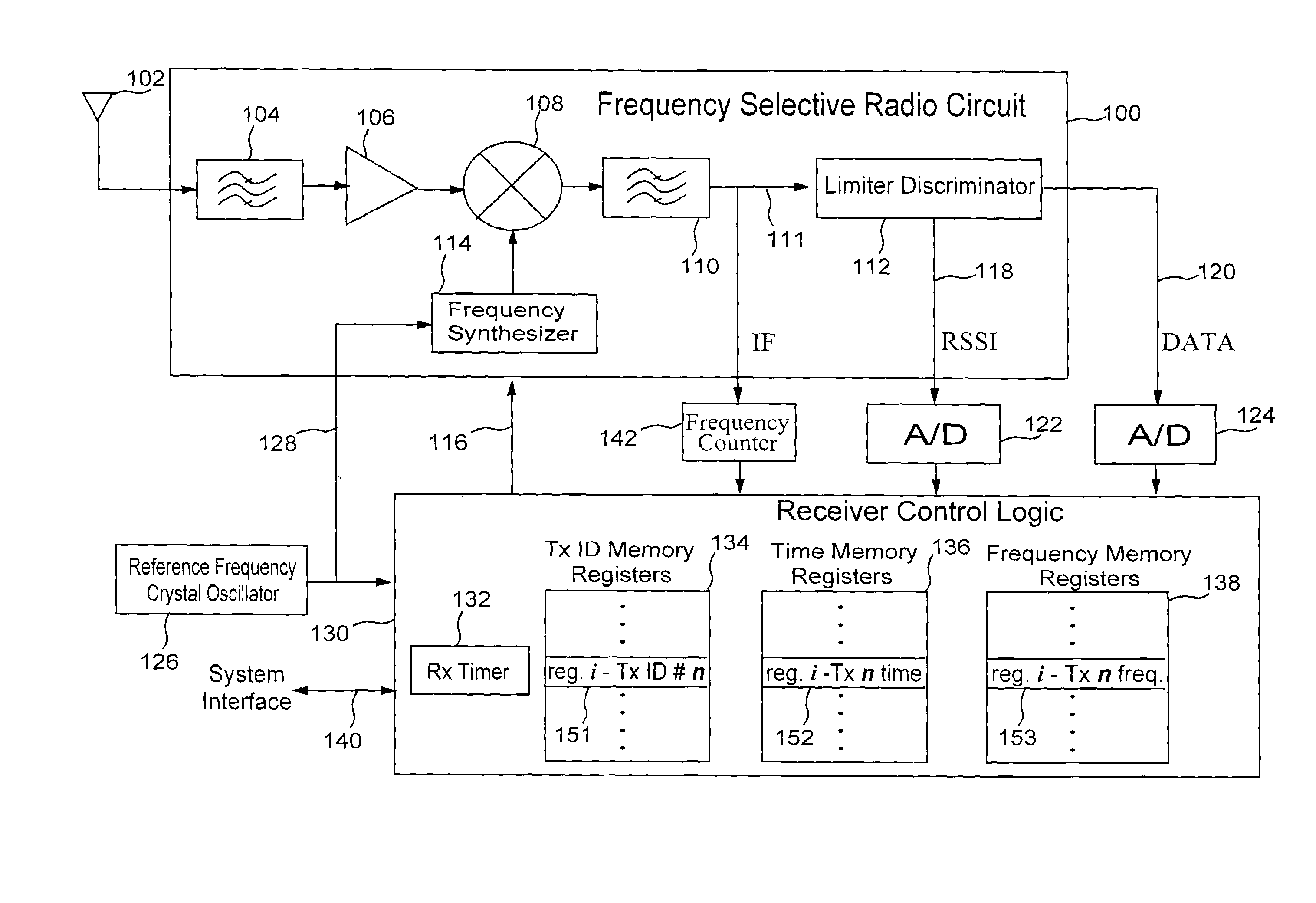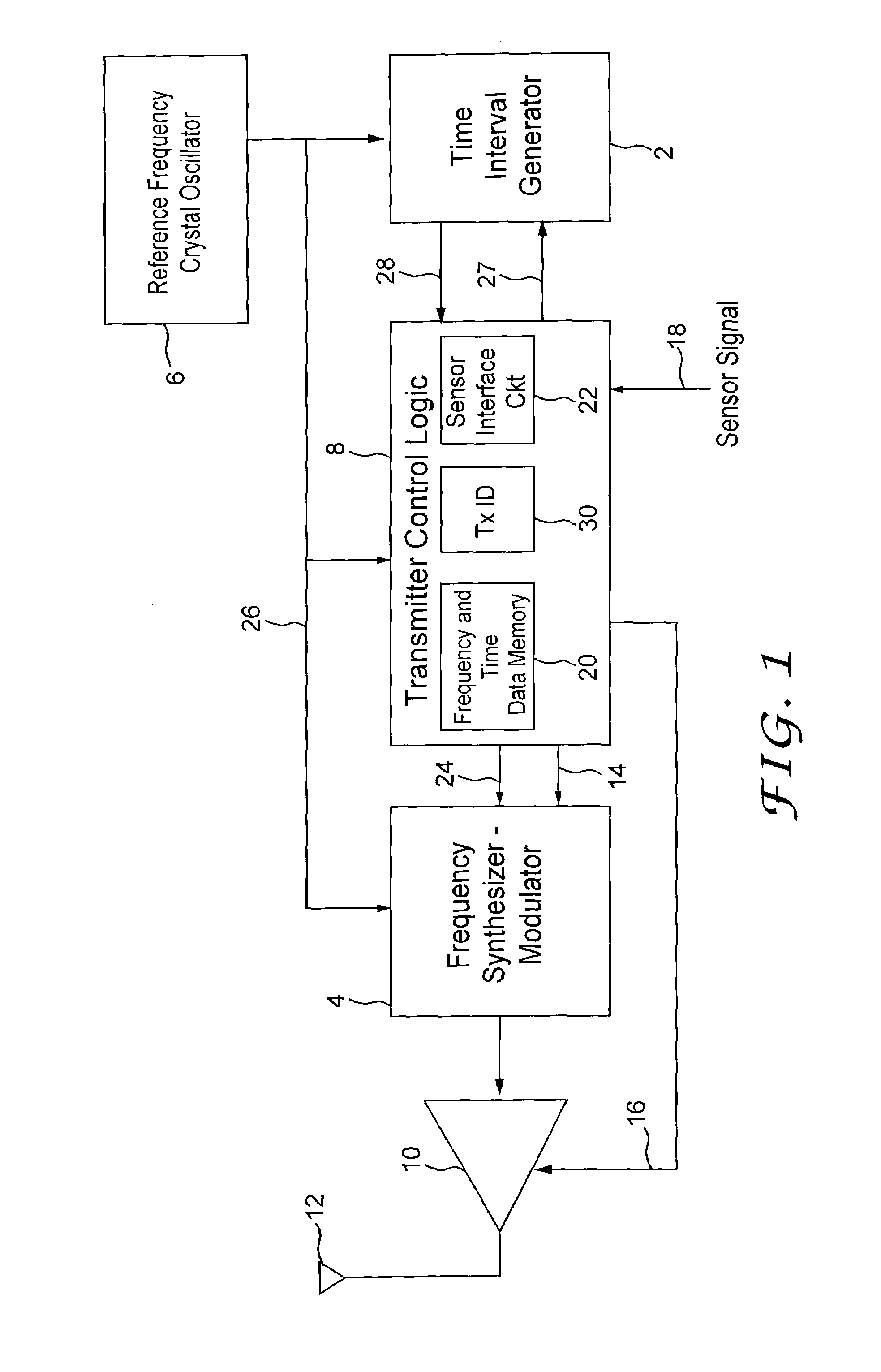Frequency hopping system for intermittent transmission
a frequency hopping system and transmission technology, applied in transmission systems, digital transmissions, instruments, etc., can solve the problems of reducing the reliability of such systems, so as to minimize the effect of collisions, improve system reliability, and minimize collision effects
- Summary
- Abstract
- Description
- Claims
- Application Information
AI Technical Summary
Benefits of technology
Problems solved by technology
Method used
Image
Examples
Embodiment Construction
[0018]Referring to FIG. 5, the frequency hopping system includes a radio receiver 401 and a plurality of radio transmitters 402, 403, 404 and 405. The radio receiver includes a system interface 410 through which the receiver can be connected to a variety of interface equipment, a controller, or a computer. Each transmitter includes an interface or a sensor or an operation to be monitored. Each transmitter intermittently transmits short messages to the receiver respectively. The transmitters are not connected to each other and do not receive messages back from the receiver. The transmitters transmit messages when they need to without any regard to other transmitters, as the transmitters are not synchronized with each other.
[0019]Referring to FIG. 1, the transmitter includes a reference frequency crystal oscillator 6 to produce a stable frequency on line 26, a time interval generator 2 establishing a time base to produce pulses on line 28 activating the transmitter, a frequency synthe...
PUM
 Login to View More
Login to View More Abstract
Description
Claims
Application Information
 Login to View More
Login to View More - R&D
- Intellectual Property
- Life Sciences
- Materials
- Tech Scout
- Unparalleled Data Quality
- Higher Quality Content
- 60% Fewer Hallucinations
Browse by: Latest US Patents, China's latest patents, Technical Efficacy Thesaurus, Application Domain, Technology Topic, Popular Technical Reports.
© 2025 PatSnap. All rights reserved.Legal|Privacy policy|Modern Slavery Act Transparency Statement|Sitemap|About US| Contact US: help@patsnap.com



